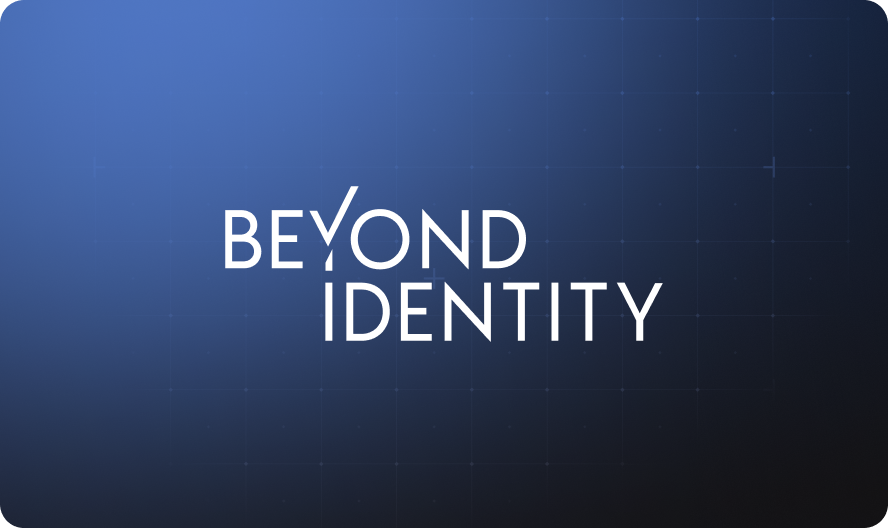Only Trusted Users & Secure Devices Gain Access
Complete your zero trust program with continuous user and device verification
Get a demo.png)
Traditional authentication fails Zero Trust
True ZTA prevents identity threats with continuous risk assessment, passwordless authentication, phishing-resistant MFA, and device trust enforcement
No visibility into device posture
Beyond Identity automatically quarantines insecure devices, and gives you the ability to control access based on real-time device risk.

Only authenticates at login
Users and devices change over time and must be continuously authenticated based on risk, even during open sessions.

Relies on phishable factors
Beyond Identity uses only the strongest phishing-resistant factors to authenticate, and completely removes passwords from the process.

Lacks integrations
Beyond Identity is built for zero trust, sharing data with other tools in the security ecosystem to improve risk detection.
Beyond Identity's zero trust solution






Secure by-design authentication works continuously with your security ecosystem
Explore how Beyond Identity's authentication works with your security stack to protect vital resources.
Integrations with your existing security infrastructure
Telemetry between Beyond Identity and your MDM, ZTNA, and EDR/XDR tools maximizing the output of your security stack, safeguarding your vital resources further.

See where your org stands in it's Zero Trust Journey
Referencing the CISA Zero Trust Maturity Model, this tool provides insights into your organization's current security environment.

Assessment of your current position within a zero trust framework

Guidance for optimal zero trust implementation

Ready to take your team Beyond?
Schedule a call with a Beyond Identity expert.
Learn more about Zero Trust
What does NIST say about Zero Trust?
NIST sees zero trust as a set of seven tenets, all working together to secure company resources continuously:
- All data sources and computing services are considered resources.
- All communication is secured regardless of network location.
- Access to individual enterprise resources is granted on a per-session basis.Access to resources is determined by dynamic policy—including the observable state of client identity, application/service, and the requesting asset—and may include other behavioral and environmental attributes.
- The enterprise monitors and measures the integrity and security posture of all owned and associated assets.
- All resource authentication and authorization are dynamic and strictly enforced before access is allowed.
- The enterprise collects as much information as possible about the current state of assets, network infrastructure and communications and uses it to improve its security posture.
How long has zero trust been around?
John Kindervag, a former Forrester analyst, is credited with coining the term “zero trust” in 2009. The security term got a boost in popularity when Google announced in 2014 that they were moving to a zero trust security model. Read More.
Is zero trust a long term security solution?
Short answer: yes. It is currently considered best practice by many security professionals. The US government issued a memo on January 26, 2022, with the subject line reading “Moving the U.S. Government Towards Zero Trust Cybersecurity Principles.”
This memo sets the groundwork for creating a zero trust architecture for federal agencies. It also set the ambitious goal of meeting this objective by the end of 2024. This move by the US federal government highlights the growing popularity of zero trust because of the strong security it provides. Read More.
Latest news and insights






















